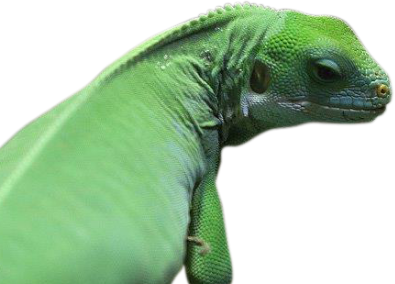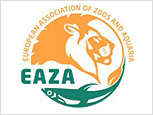Indian Rhinoceros
KEY FACTS
-
LATIN NAMERhinoceros unicornis
-
BIOMEWetlands
-
CLASSMammal
-
ORDERHerbivores
-
CONSERVATION STATUSVulnerable
COME AND FIND ME AT..
Asian Sanctuary

About the Indian Rhinoceros
The Indian Rhinoceros possesses highly distinctive armour-like skin and a single horn that can be up to 60cm in length making it an easily recognisable animal. Its single horn distinguishes the Indian rhinoceros from its African counterparts, all of whom possess two horns; hence it is also referred to as the Greater One-Horned Rhinoceros. To combat the heat in their native habitat, Indian rhinos tend to be most active during the cooler parts of the day and immerse themselves in nearby rivers and mud holes during extremes of heat.
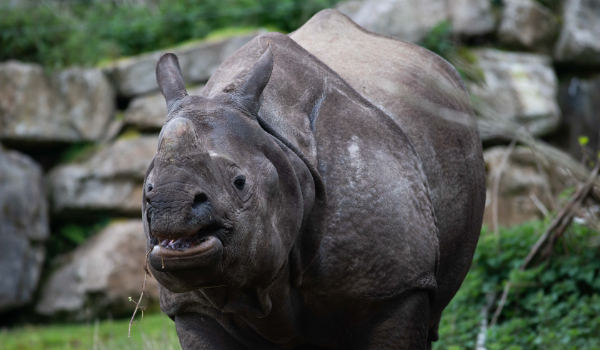
Habitat
The Indian rhinoceros can be found grazing in the flood plain areas, adjacent swamps, and riverine forests at the foothills of the Himalayas in Northern India and Nepal. The possession of prehensile lips ensures that they are well adapted to grasp long grasses and vegetation. They form tunnel-like pathways as they move through their tall grass habitat. Leaves and fruit tend to be the main dietary choices, as well as a variety of aquatic plants which they may encounter while swimming. Generally solitary creatures, except for mothers and offspring who stay together, Indian rhinos live in loosely defined territories. These territories are marked with urine, faeces, and glandular secretions. That said, Indian rhinos may meet up at watering holes without any aggression being displayed among individuals.
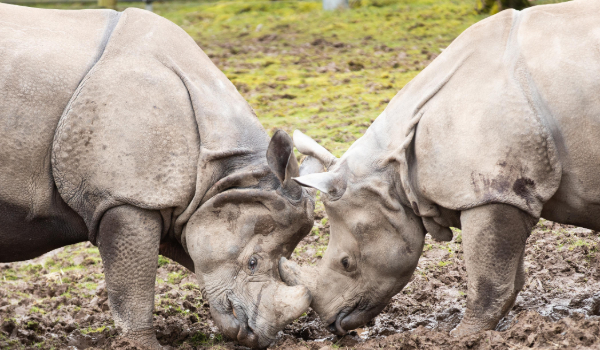
Wild Notes
Rhinoceroses are the largest land mammals after the elephant and are made up of five species, two African and three Asian. The African species include both the White and Black Rhinoceroses with both species possessing two horns. Asian rhinos include the Indian, the Javan, each with one horn, and the Sumatran, which has two. The Indian rhino can weigh up to 2200kg!
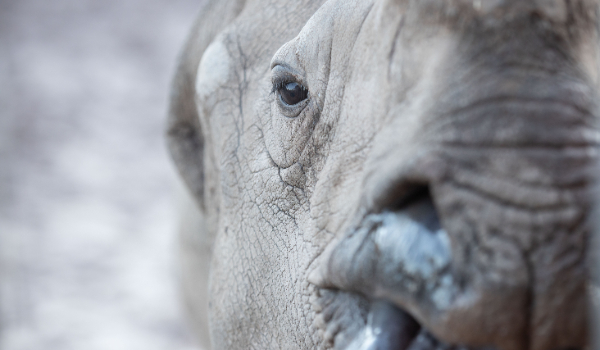
Conservation
Indian rhinoceroses are currently listed as Vulnerable on IUCN’s Red List but fortunately, their numbers have risen due to conservation efforts. India and Nepal have strengthened their opposition to poaching and have created parks and reserves to protect the rhinos. Unfortunately, a number of these protected areas have reached their carrying capacity, subsequently rhinos are leaving these areas resulting in human-wildlife conflict and leaving them susceptible to poachers.
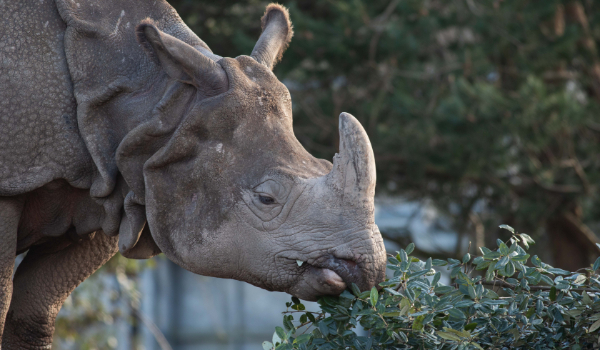
Did You Know?
Rhinoceroses have poor eyesight. However, they compensate for a lack of acute vision by having an exceptionally well-developed sense of hearing and smell. In fact, they use their enhanced sense of smell to seek out possible mates during the breeding season! At around 4-6 years old, female Indian rhinoceroses are ready to mate. The males generally reach breeding age in their ninth year, but only the largest and dominant male rhinos will mate. After a 15- to 16-month gestation period, the female rhino will give birth to a single calf. Male rhinoceroses do not assist in rearing their offspring.
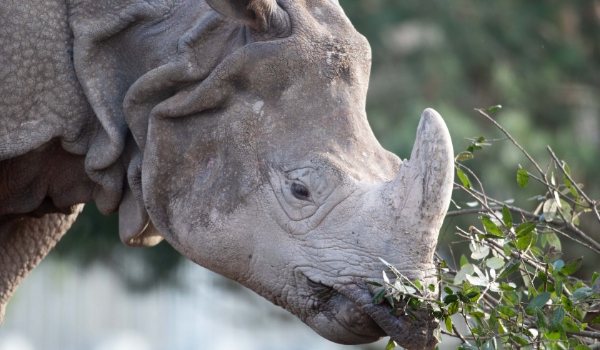
The Fota Connection.
Fota Wildlife Park is committed to the conservation of this vulnerable species by partaking in the European Endangered Species Breeding Programme (EEP) for the Indian Rhino. Longterm, it is hoped that breeding success will be accomplished once its current residents reach reproductive age. The park’s male rhinoceros (Jamil) in on breeding loan from ZSL Whipsnade Zoo in the U.K while its only female rhinoceros – Maya arrived from Botanical Garden Branfér Zoo in France in 2020.





